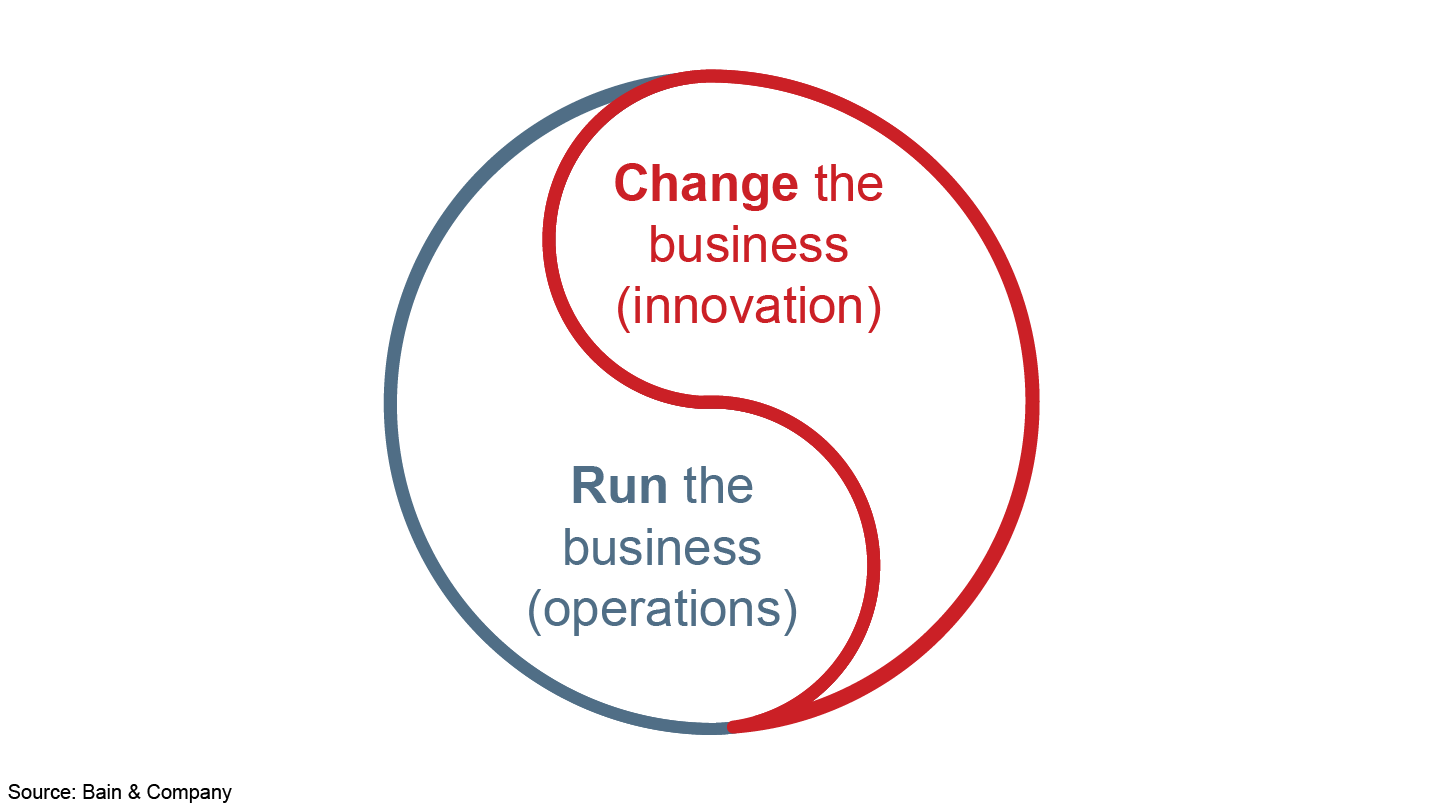About
Scaling Agile
Scaling Agile
Agile enterprises transform corporate bureaucracy and innovation into symbiotic partners.
About
Agile enterprises transform corporate bureaucracy and innovation into symbiotic partners.
One definition of scaling Agile is simple: Add more Agile teams. For some companies, this may be the right choice. But even as their Agile teams develop innovations better and faster than ever before, in our experience, the company’s overall innovation velocity is unlikely to improve. The impact remains quite local.
The other definition of scaling Agile, the one we are focused on here, is creating an Agile enterprise. These enterprises aim to create Agile business systems by transforming corporate bureaucracy and innovation into symbiotic partners. As partners, they collaborate to deliver better results more broadly (see Figure 1).

The right balance between the two varies. Managing R&D activities for an innovation leader in robotics will demand far more change than managing mining operations for a commodity player in the gravel industry, for example.

Agile innovation teams are more productive, higher in morale and faster to market. Here’s how to launch hundreds, even thousands of them.
